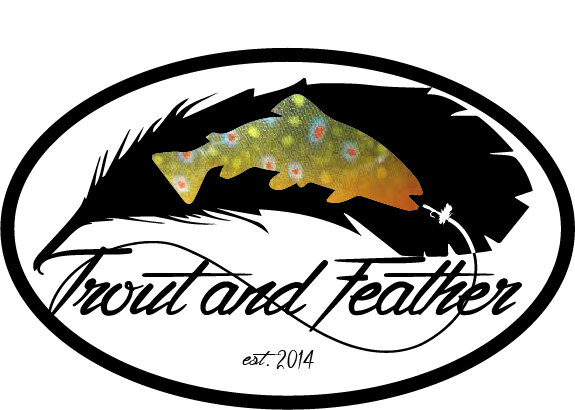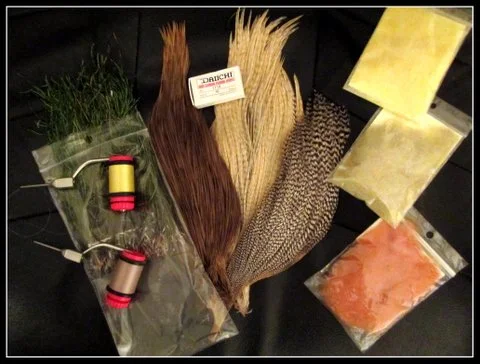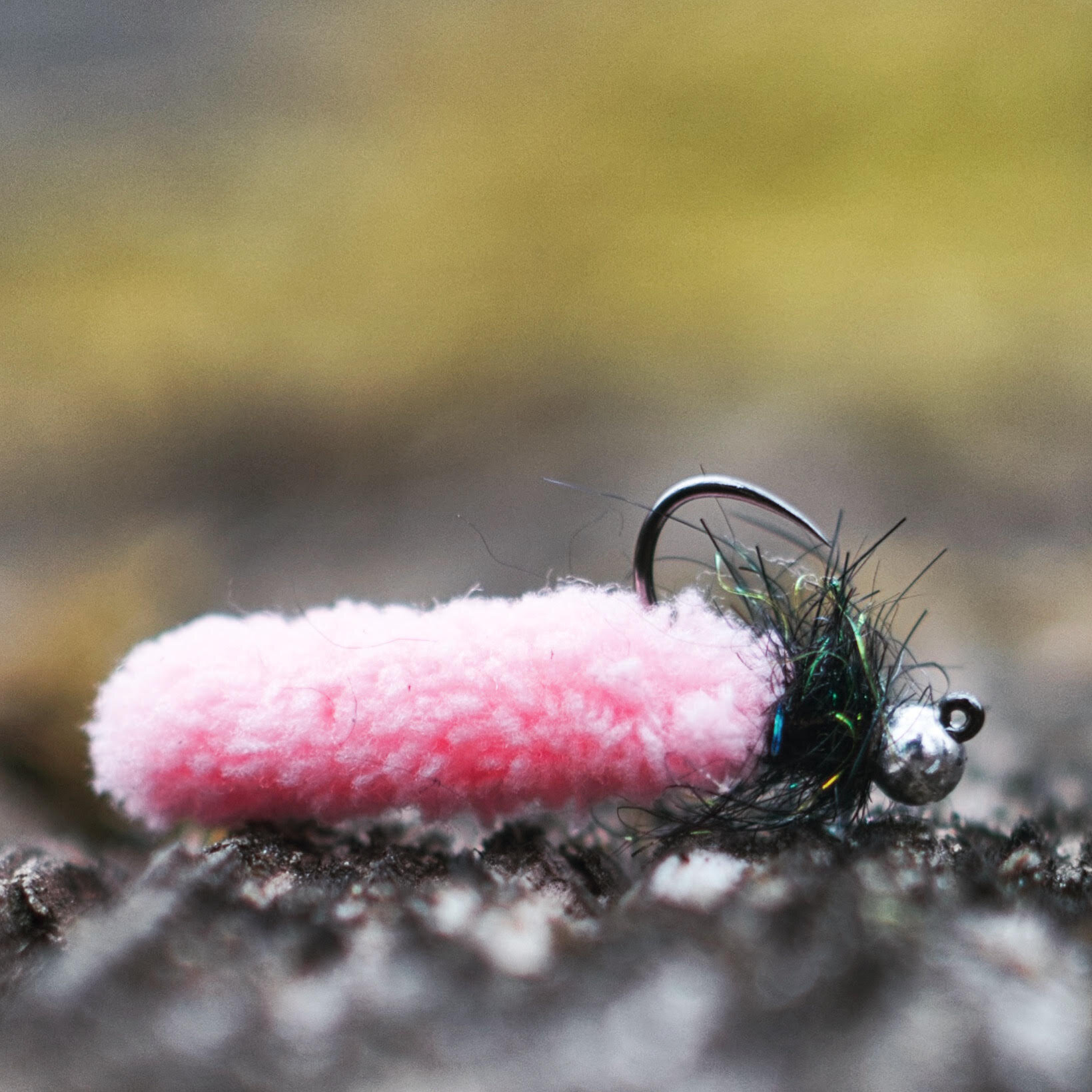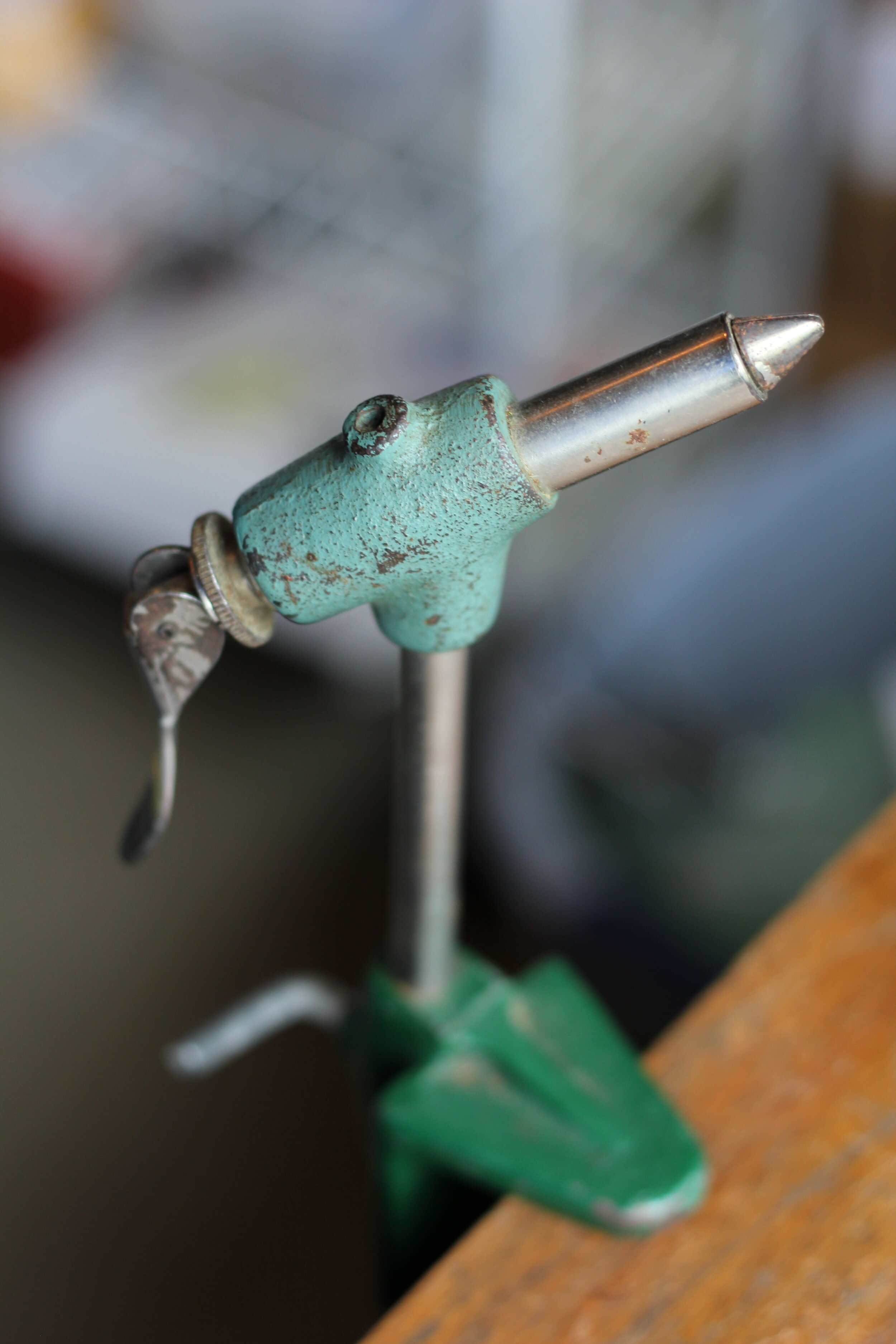New to fly tying?!? Welcome to your next addiction! The worlds of fly tying and fly fishing can be difficult for those new to each. Through this page, I want to offer some general advice and recommendations first, then highlight some of my videos that are perfect for those new to tying. When in doubt, pause and be sure to ask someone for help. Feel free to contact me with any questions you have:
Tying Your First Fly
So many flies, so little time! When in comes to tying your first pattern, begin by selecting a fly that you know you’ll fish…and it will catch fish. I recommend purchasing the materials for that fly, then become proficient in tying it. When one is tied that doesn’t look quite right, grab a razor blade and remove everything from the hook. Push yourself to have each one looking the same of better than your previous one.
No matter the Mop (seen here) or a Woolly Bugger, your first fly tied is a special one. I don’t care how it looks…once you’ve tied your first fly, place it someone safe (don’t fish it) so you can look back and see how far you’ve grown as a fly tier. Most importantly, have fun with tying, as that will make for a great experience both at the vise and on the water.
Fly Tying Kit - If new to fly tying, I believe that there are some "absolutes" that are needed, including a quality vise, bobbin, scissors, and a whip finish tool. I discuss the vise further below, and recommend talking to your local fly shop when purchasing the other components.
There are also fly tying kits sold for beginners, which include a vise and tying tools. They are a minimal investment and will get you an overall selection of tools at a lower price point. The vise included in most tends to be low quality, so keep that in mind. I have used many of these kits for fly tying classes with students over the years and get around three years out of the vise…that’s with 12 year old children, so you may get a few more than that! Here’s a link for a typical set:
My first vise was shared by my Uncle John, and though it had already tied quite a few flies, this vise truly helped to fuel my addiction. Fly tying vises can cover a range of hook sizes and styles. This vise, featuring a c-clamp, was limited in its range, and I was constantly on the hunt for a rotary vise for my second one.
Vise - This is a difficult decision because of the options that exist. There are a two types that I recommend, rotary and tension-style vises. The cost is really a starting guide, because there are many in the $100 range, with the next tier falling around the $300 price point. For beginners, I suggest starting closer the lower price, and moving up (as needed) once you are committed to tying on a regular basis. As I love to say, if you ask 20 people about their favorite vise, you may get 20 different vise recommendations! Please contact me for more specific recommendations, as I know this can be overwhelming initially.
Tying Materials - Versus going out and buying random materials, instead I suggest selecting five to ten patterns that you will use on a regular basis fly fishing. Next, purchase materials to tie those patterns specifically, thus ensuring that you have the correct materials (which can be later used on new fly patterns as needed). When selecting the patterns, talk to your local fly shop so they can recommend effective flies that a beginner or intermediate tier can handle; from there, start tying!
Resources - In today's world, you have lots of ways to learn about fly tying and fly fishing. If you can take a class for either, that is where I would recommend starting, as the direct contact makes an impact when learning. On my resources page, you can find more specific recommendations for books, videos, online resources, etc.
Confidence Patterns
One of the first flies I tied A LOT of was the Black Ghost. It was a streamer with some beginner to intermediate fly tying techniques, but more importantly, fish liked it! That helped to build my confidence with the pattern and it soon became a staple both at my desk and in my fly box.
Confidence patterns are an important part of fly tying for me, because they help to practice essential tying skills, plus fill the box with fish-catching flies. Think about some of the flies that you know simply catch fish; select a couple of those to tie…and tie, and tie, and tie! Repetition is critical for building foundational skills, and if a pattern does not look quite right, grab a razor blade and try again!
Recommended Videos: The following videos are perfect for beginners, giving practical advice in terms of buying the correct materials, selecting easy-to-tie flies (that are effective to fish), and making that transition to the water with some tips. New content is added to this page regularly, though if there are other videos that you would find helpful, please reach out to me via the "Contact" page. Good luck in this sport; it's a lot of fun once you get past the "overwhelming" stage!
Keeping a clean hook eye is important in fly tying, as nothing is more frustrating than trying to get tippet through in the middle of a hatch! This video shares some of my best tips for keeping that hook eye clean!
































The Internet has instantly placed thousands of fly tying resources in front of us, which is a wonderful thing. Selecting the right resource for you is where the decision becomes a little more difficult. In this video, I discuss differences that I notice between fly tying websites, share some of my favorites, and ask all of you to tell me about the ones you visit regularly.
As mentioned in the video, please share your favorite website(s) in the "Comments" section on the YouTube page.
Links to websites listed during this video:
Fly Tying Forum: http://www.flytyingforum.com/
Reddit Fly Tying: https://www.reddit.com/r/flytying/
YouTube: https://www.youtube.com/user/tctrout
Loren Williams: http://loren.teamfreestone.com/welcome
Idylwilde Flies: http://www.idylwilde.com/
Trout and Feather: http://www.troutandfeather.com